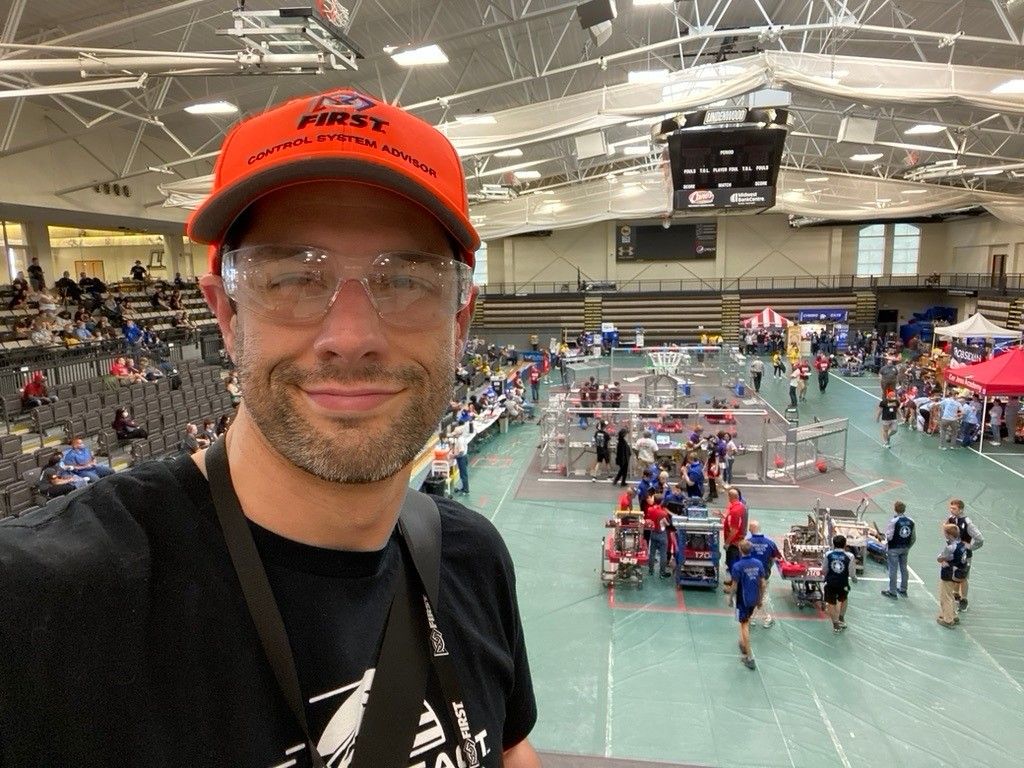Community Service through Robotic Engagement
Saturday I volunteered as a Control Systems Advisor for FIRST Robotics Competition which is as close to real-world engineering as a student can get!
The team of students I mentored had an issue with their signal relay light. It was blinking when it should have been solid. This light is a safety feature so that you know not to stick your hand in the robot when it’s on. Blink means “danger” and this one was always blinking even when it was turned off but when we checked the enable and disable features they were working perfectly.
A signal like this must be accurate, a faulty sensor could cause serious problems if someone were to ignore the signal and stick their hand in there!
I had never seen this particular problem but I know the part it connects to has failures sometimes. It’s the most complex part of the robot. My first guess was that something was extremely broken and if we found a bug it would need to be reported quickly.. The portion of code that controls the blinking is very difficult to alter, it’s designed to be difficult to access because it’s a safety-related function.
The team had field issues with this robot during trials right before the safety signal started blinking but when I asked the FTA if it was possibly related he said very likely not. Sometimes it pays to do a little digging so I then asked a safety advisor if he had ever seen this issue and if it would disqualify them from running in the event. He knew where to look and found a jumper wire that connects the light. It’s usually set up only once, is very simple to install, and almost never has issues. A missing or misplaced jumper would be considered a “simple issue” and in the future, if an inexperienced team has this issue now I know to check the wiring first.
At least in this case the system failed correctly, alerting us to more danger than was real instead of not telling us about actual danger. This is how safety systems are designed to work and once we fixed the jumper, it worked immediately in the way it was designed to do.
I appreciated that I was able to ask for help from my peers. Even though I did not have the answer myself, we were able to solve this problem as a group. The team was able to compete and everyone was safe. My willingness to ask for help ended up being more important this time than my technical skills or knowledge of the control system. Sometimes that’s the way it goes!
When I first started volunteering I was just helping a few teams here and there. Then I helped at the organizational level for the whole group, and at some point, I was asked if I’d like to be a strategic planner for the state of Missouri. Wow, I was like, Yes, I do! This fits just right because now I can make an impact in the whole state of Missouri. I'm going to be able to leverage myself at the state level to try and make a difference in hundreds of kids' lives to bring them into STEM education.
That mission actually aligns perfectly with what we're doing at Frontier Equity Partners, making a positive change in people's lives here in Missouri. I'm creating more housing that is accessible to the people that need it. The reason that we do that is that we can make a difference. We're trying to make the largest possible impact and here's a way that we came up with to do it. Real estate is another tool for us to make an impact in a big way. We're trying to multiply every single thing that we do all the time.

_20220506-4.png)
